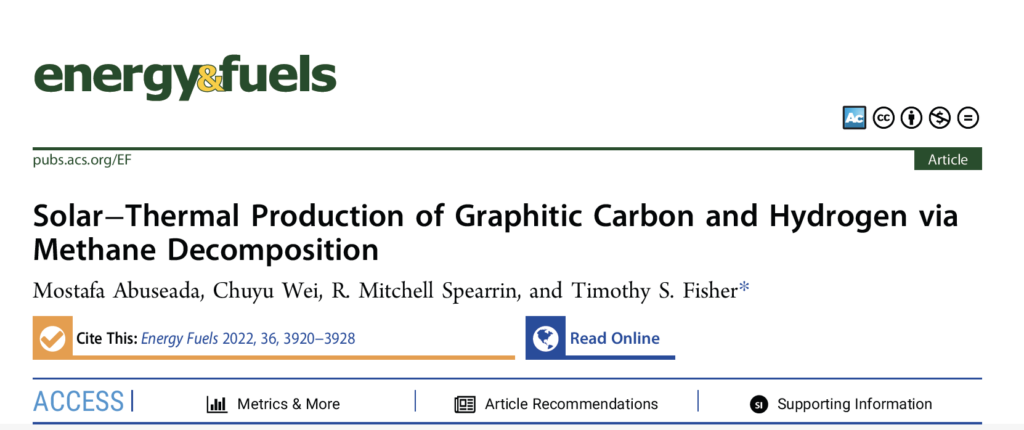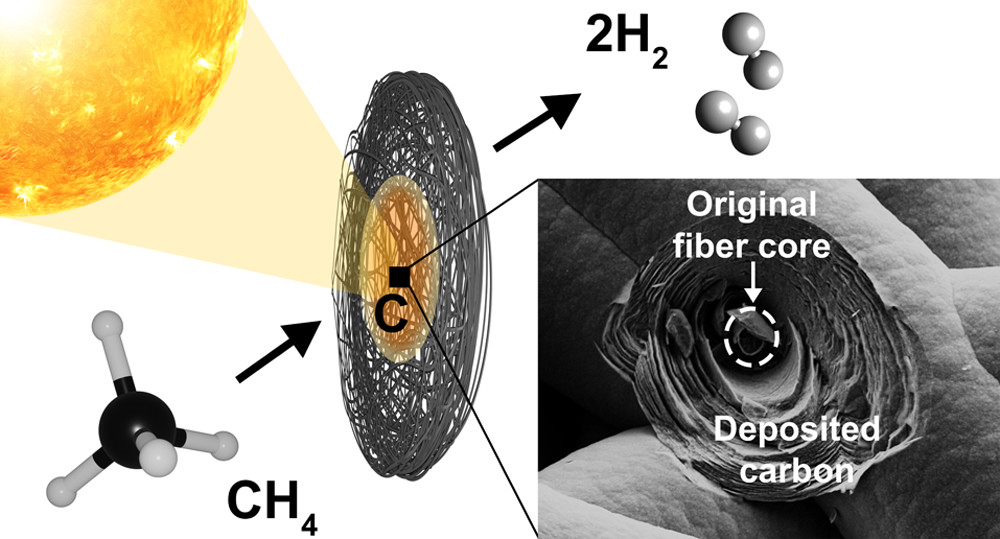- Synthesize graphite through direct solar-thermal methane pyrolysis and evaluate its quality using characterization techniques such as Raman spectroscopy, scanning electron microscopy (SEM), and X-ray diffraction (XRD).
- Produce hydrogen fuel through direct solar-thermal methane pyrolysis, and assess process yield and efficiency by analyzing gas products with an in situ mass spectrometer gas analyzer.
Contemporary carbon and hydrogen production processes release significant CO2 emissions with negative consequences for the Earth’s climate. Here we report a process in which concentrated irradiation from a simulated solar source converts methane to high-value graphitic carbon and hydrogen gas. Methane flows within a photothermal reactor through pores of a thin substrate, with the process reaching steady-state conditions from room temperature within the first minute of irradiation by several thousand suns. Methane decomposes primarily into hydrogen while depositing highly graphitic carbon that grows conformally over ligaments in the substrate. The localized solar heating serves to capture solid carbon into a readily extractable form while maintaining active deposition site density with persistent catalytic activity until the ligaments coalesce to block the flow. Even with a large flow area through regions of lower irradiation and temperature, methane conversions and hydrogen yields of approximately 70% are achieved, and 58% of the inlet carbon is fully captured in graphitic form1. Further studies on the influence of process parameters in the direct solar-thermal production of hydrogen and graphite via methane pyrolysis have been carried out
2.



